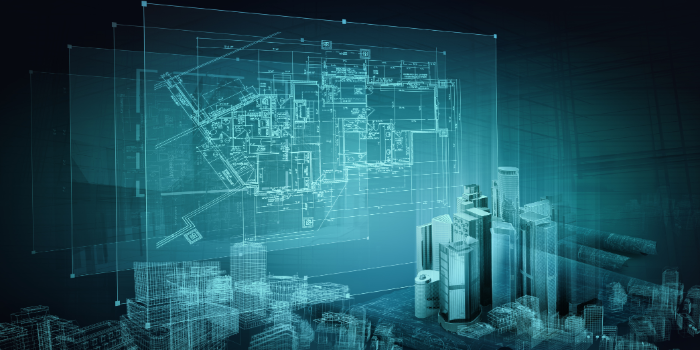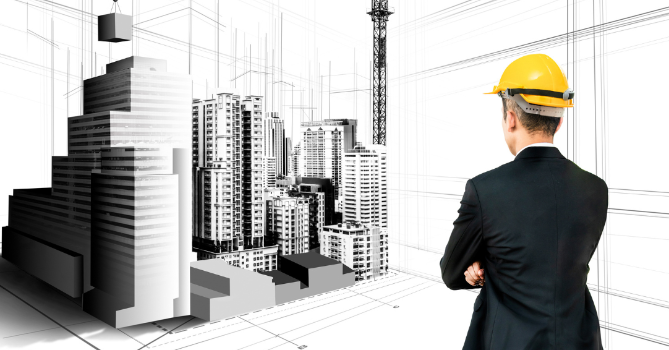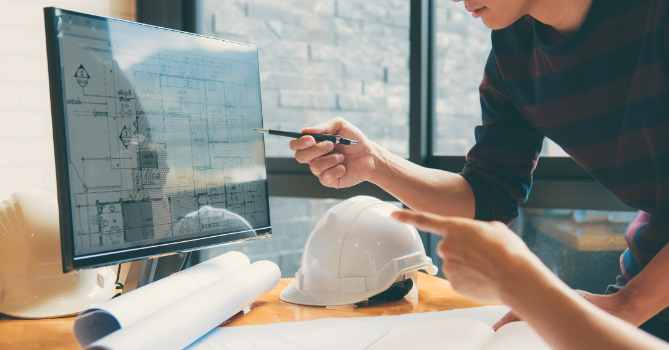
Will AI Redesign the Future of Architecture?
Introduction
AI is already transforming many industries, and architecture is no different. From generating early design ideas to optimizing energy efficiency, AI is making its mark. But does this mean AI will replace architects? Not quite. Instead, it’s enhancing how architects work, allowing them to explore more creative and innovative solutions. AI helps automate repetitive tasks, giving architects more time to focus on design. As the technology advances, it will reshape architecture, but the core of creativity will still lie with human designers.
AI in Conceptual Design
AI is transforming how architects approach the early stages of design. One powerful tool is generative design. Architects input specific design goals, and AI generates multiple options that meet those criteria. This helps architects explore more possibilities in less time, sparking creativity.

AI is especially useful in analyzing site data, climate factors, and building codes to ensure designs are both innovative and practical. For example, an AI program can suggest layouts that maximize energy efficiency or use sustainable materials. This reduces guesswork and gives architects a clearer direction.
AI doesn’t stop at generating options—it helps with decision-making tool. Architects can run simulations to see how their designs will perform in real-world conditions. This means fewer surprises later on. AI also frees architects from repetitive tasks like drafting, letting them focus on refining their designs. As a result, architects can push creative boundaries while meeting practical demands.
AI in Planning and Development
AI plays a major role in the detailed planning of architectural projects. It helps architects manage a range of factors, from zoning laws to materials. AI can analyze complex data sets quickly, which speeds up decision-making. For instance, AI tools can recommend the best materials for durability, cost, and sustainability. This helps architects design buildings that last longer and use fewer resources.

Another benefit of AI is in project scheduling. AI can predict timelines based on past projects and current data. This makes planning more accurate, reducing delays. Architects can use AI to model how different construction methods will affect the timeline and costs. This level of insight makes projects more efficient and cost-effective.
AI also enhances collaboration in architecture. With AI-powered tools, teams can work together in real-time, even from different locations. This improves communication and helps catch potential problems early. Moreover, AI’s ability to simulate construction processes lets architects test designs before breaking ground. This means fewer surprises during construction, saving time and money.
In short, AI is helping architects plan smarter and build faster, while also improving sustainability and reducing costs.
AI in Building Operations and Maintenance
AI continues to improve building operations after construction is complete. Smart building systems powered by AI manage everything from lighting to heating. These systems constantly adjust to maximize energy efficiency, saving both energy and money. For example, AI can learn from the building’s usage patterns and fine-tune temperature controls or lighting schedules to match real needs.

Predictive maintenance is another game-changer. AI can monitor building systems, detecting signs of wear and tear before problems arise. Instead of waiting for something to break, facility managers can address issues early, reducing downtime and costly repairs. This also extends the life of the building's systems, keeping everything running smoothly.
AI also helps with long-term sustainability. By analyzing real-time data, it ensures that a building is not only energy-efficient but also operating at peak performance. In the long run, this reduces the building's environmental footprint while lowering operational costs.
The Role of BIM in AI Integration
Building Information Modeling (BIM) and AI make a powerful combination in architecture. BIM allows architects to create detailed digital models of buildings, which AI can then analyze to improve design and construction. For example, AI can use data from BIM to optimize energy efficiency or predict potential structural issues before they arise. This integration helps architects create smarter, more efficient designs.
BIM also makes collaboration easier. With AI, project teams can analyze BIM data in real-time, making decisions faster and reducing errors. AI tools can suggest better materials or construction methods based on the BIM model, helping to lower costs and improve sustainability. This not only saves time but also ensures that projects stay within budget.
Additionally, BIM and AI help architects focus on long-term building performance. By using AI to analyze data over time, architects can ensure that buildings continue to operate efficiently, adjusting systems as needed to reduce energy consumption. Together, BIM and AI offer a more integrated, data-driven approach to designing and managing buildings.
Will AI Replace Architects?
AI is transforming architecture, but it’s not replacing architects. Instead, AI works as a tool to enhance creativity and efficiency. While AI can automate tasks like drafting, modeling, and data analysis, it lacks the human touch needed for storytelling and emotional design. Architects bring creativity, context, and an understanding of how people experience spaces—something AI cannot fully replicate.

Rather than a threat, AI serves as an assistant that helps architects work smarter. It frees up time for architects to focus on design challenges and innovation. AI can analyze data and suggest solutions, but architects are still the ones making final decisions, balancing aesthetics, function, and emotion. In the future, AI will likely become even more integrated into architectural workflows, but architects will remain essential in bringing creative visions to life.
Conclusion
AI is changing the architecture industry, but it’s not taking over. Instead, it’s a powerful tool that enhances the way architects design, plan, and maintain buildings. From generating creative concepts to improving building operations, AI helps architects work smarter, not harder. As technology advances, it will become even more integrated into the profession. However, the core of architecture—creativity, human insight, and the ability to design spaces that connect with people—will always rely on human architects.